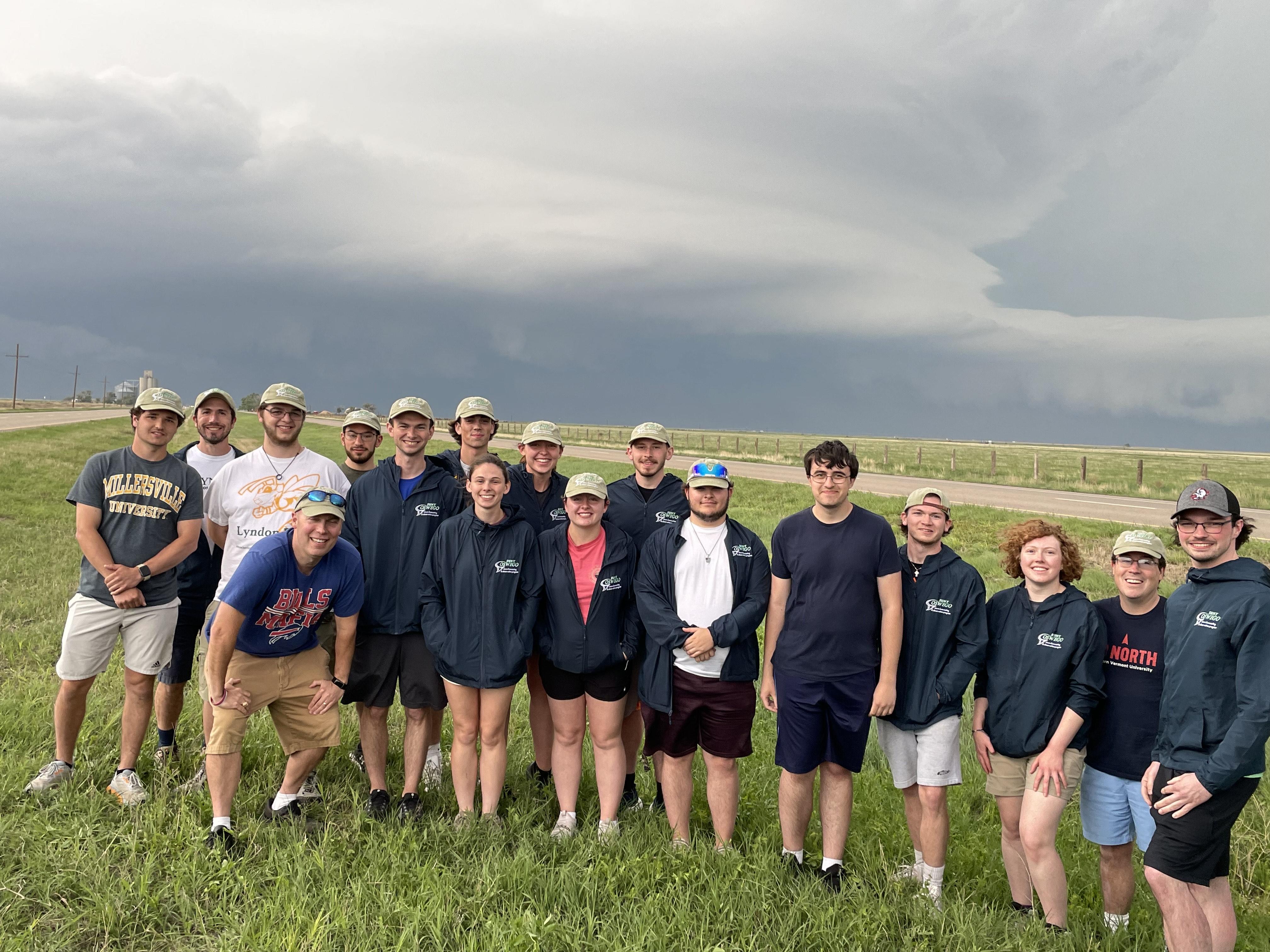The "Oswego Chasers" 2023 team poses for a picture in front of a stormy sky in Stratford, Texas. Pictured from left; Michael Pagnanelli, Ari Preston, Brandon Adams, Scott Steiger, Joshua Intini, Matt Condon, Dan Kelly, Rachel Palladino, Kayla Lewis, Gabby Brown, Aidan Alwang, Kyle Camille, Shaun Laurinaitis, Max Gallo, Brianna Hauke, Jason Kaiser and Dan Hummel. Not pictured: Brad Goldowsky.
SUNY Oswego’s storm-chasing team known as the “Oswego Chasers” recently returned from their 2023 trip across the nation’s heartland. The summer expedition is taught annually by meteorology professor Scott Steiger, providing them with hands-on experience in the field.
The class began by gathering in Oswego to do some forecasting for their chase. This year, they ended up in the Texas Panhandle and eastern New Mexico.
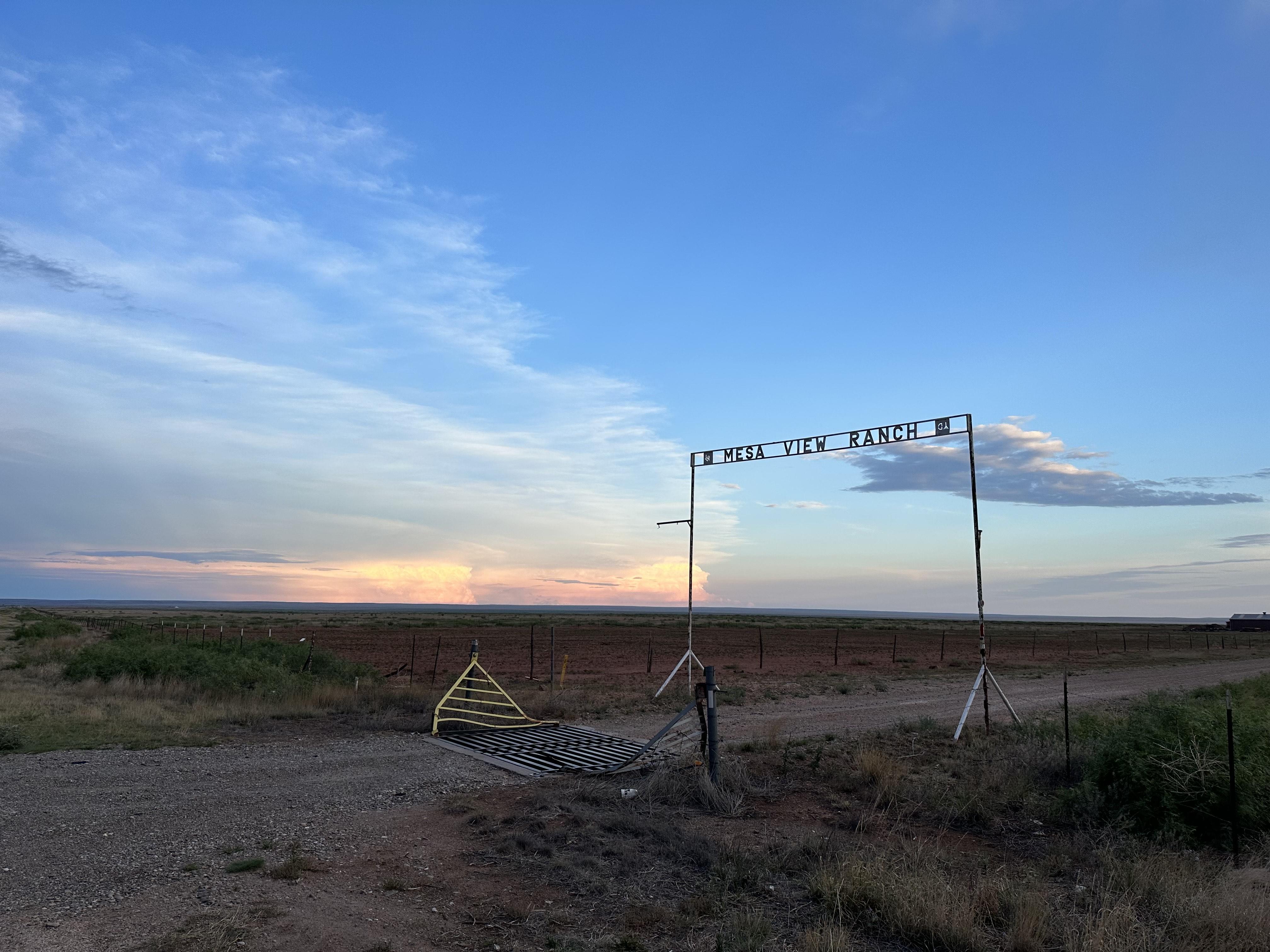
Photo by Shaun Laurinaitis
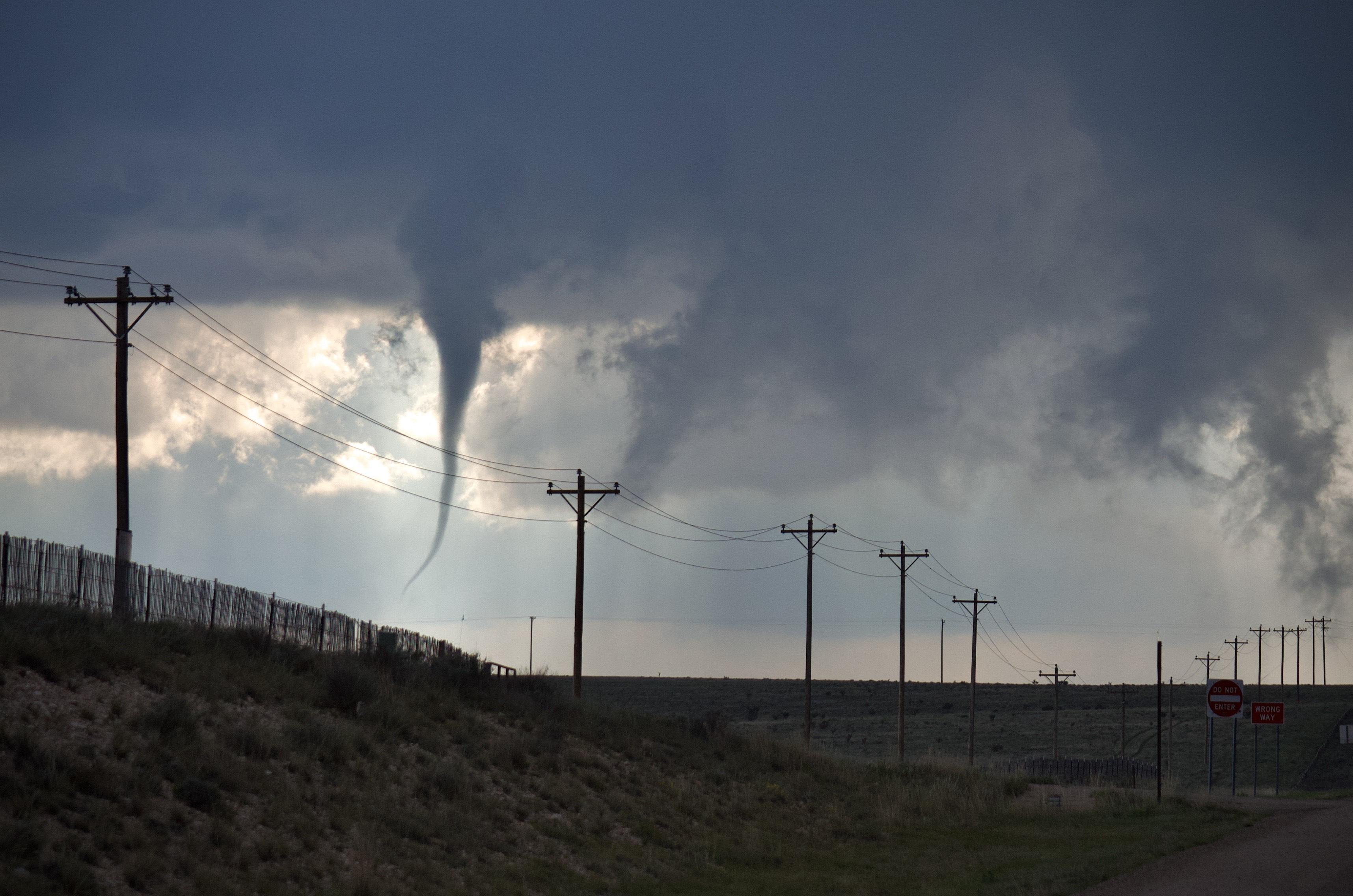
Photo by Daniel Kelly
“What was unique about this year is we pretty much stayed in the same general area of western Texas and New Mexico which from what I’ve heard is pretty rare,” said chaser Michael Pagnanelli. “We didn’t have as much driving as previous years.”
While on the trip, students split into three groups that were in charge of different aspects of the trip; the logistics team, the equipment team and the forecast team. Since the teams were set up in a rotation, students were able to experience each team.
The logistics team was in charge of navigation, filling the van with gas, cleaning the windows and other tasks. The equipment team was in charge of the weather balloons, including filling them with helium, launching, attaching the radiosonde device and observation.
“We had an antenna that connected to a computer in the one van that would collect the data from the radiosonde. We had to wait about a half hour to 45 minutes or so for the balloon to fully go up through the atmosphere to get all the data we needed,” said Pagnanelli.
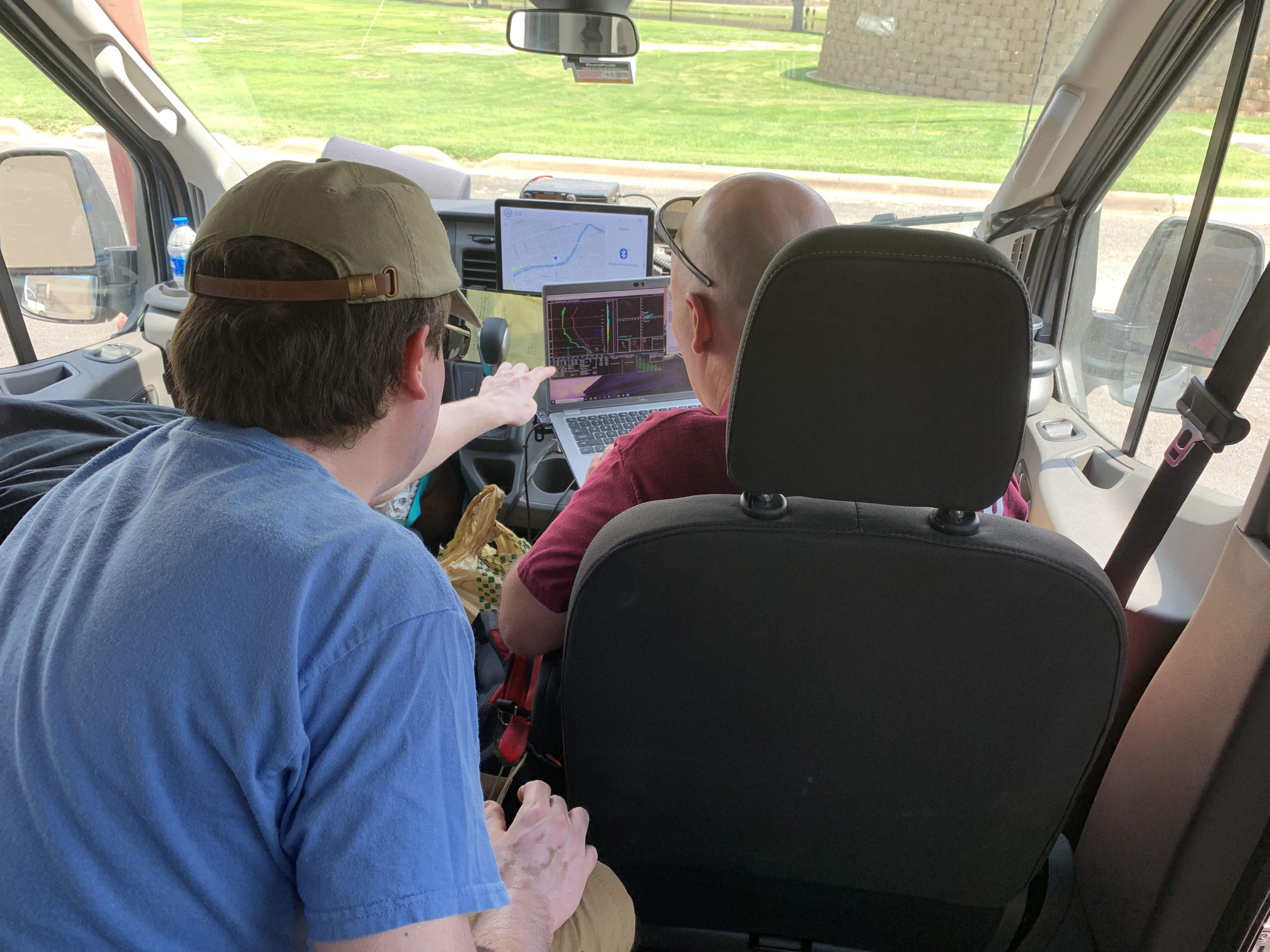
Photo by Aaron Preston
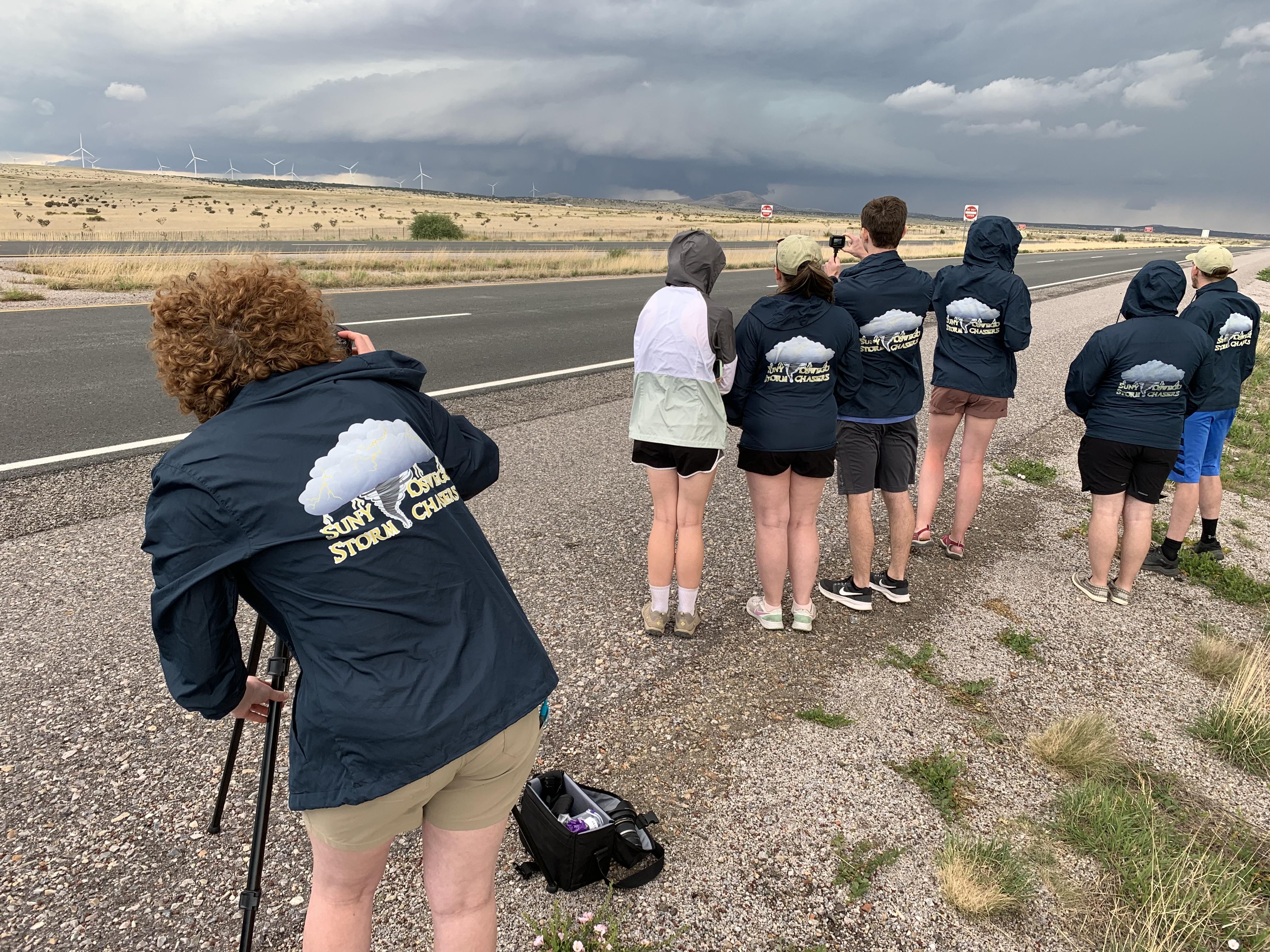
Photo by Aaron Preston
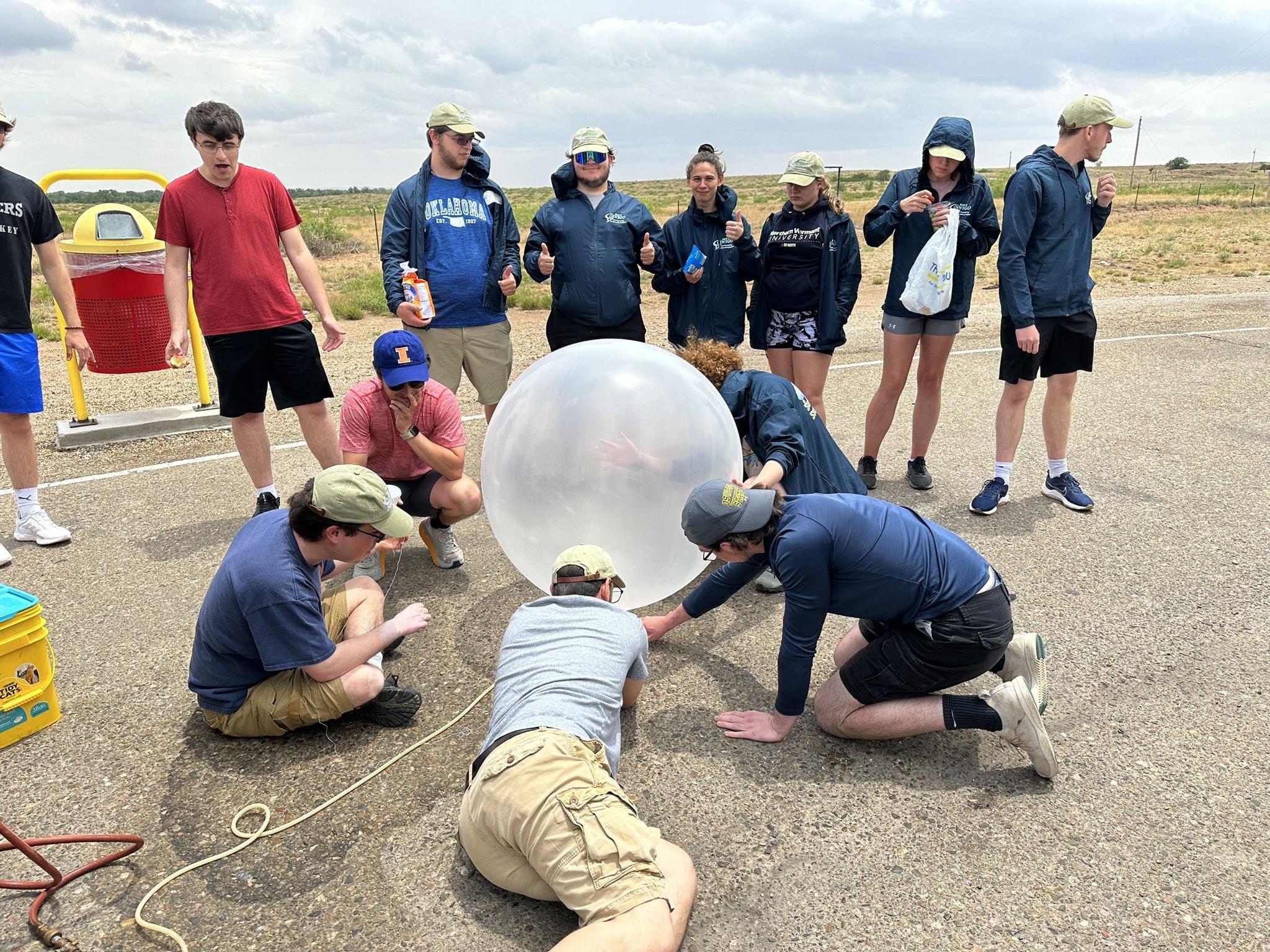
The last group, the forecast team, studied the atmospheric conditions each morning and determined where the group was headed next. Chaser Shaun Laurinaitis says the weather conditions were much different than in New York.
“There’s really no trees so you could be looking at a cloud and think it’s close but that storm could be one hundred miles away,” Laurinaitis said. “Just the verticality and how large these structures are is really breathtaking to see. To actually feel the storm too, you can feel the wind going into the storm, going out of the storm. It’s almost like the storm is breathing. That’s really cool to experience.”
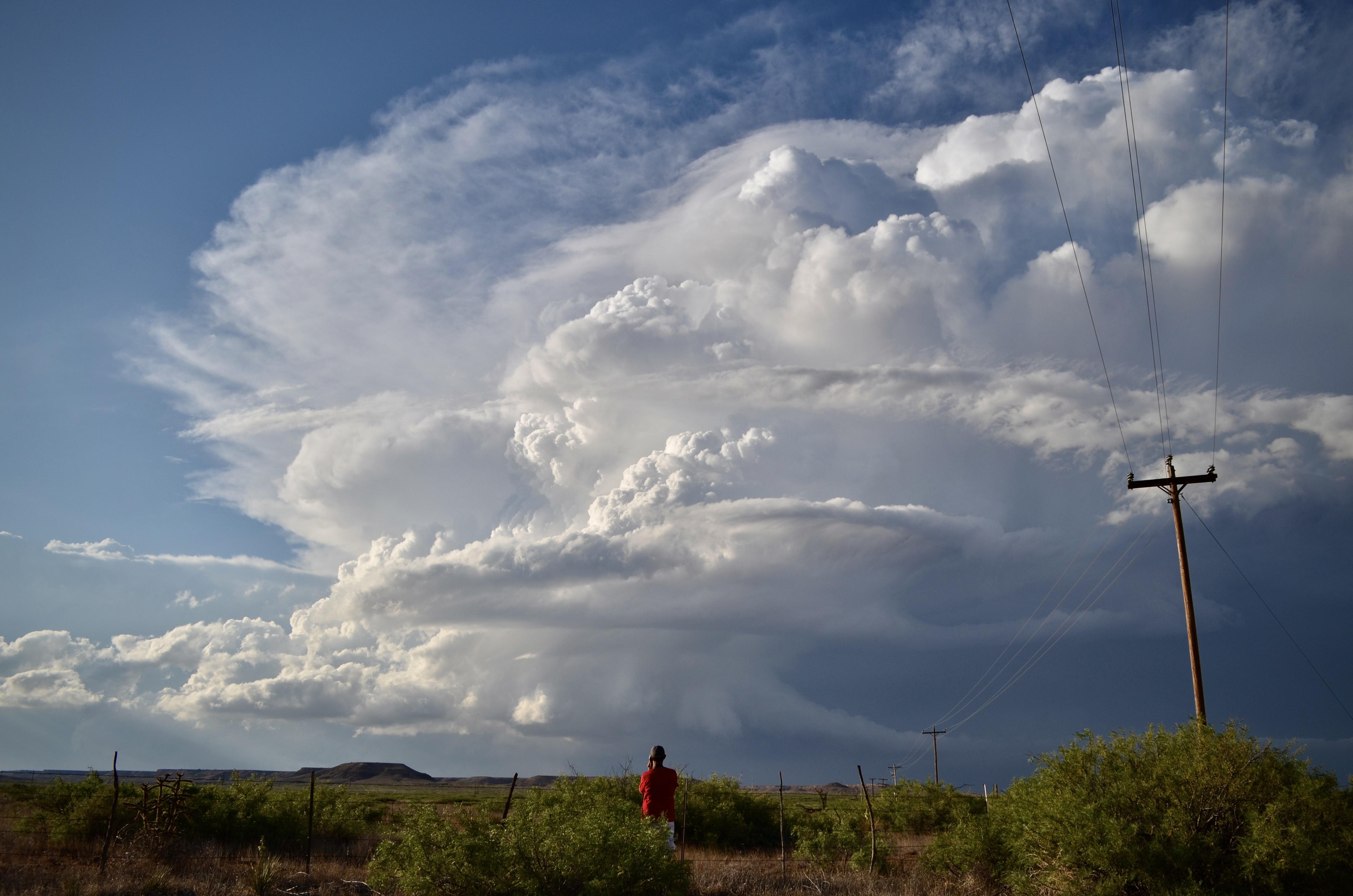
Photo by Daniel Kelly
Both Pagnanelli and Laurinaitis graduated from SUNY Oswego in May 2023 with meteorology degrees. Pagnanelli will go to graduate school at the University of Illinois, and Laurinaitis will be going to graduate school at Oklahoma University.
Connecting while chasing
The students were able to meet other storm chasers out in the field and learn from them.
“When we came into one town in Texas we actually ran into a field campaign called TORUS (Targeted Observation by Radars and UAS of Supercells) so seeing the scientists there was really cool,” said Laurinaitis.
During the trip, the team also met up with meteorologist Pat Cavlin with KHOU11 in Houston, who is also an Oswego alum, and went on the trip himself while studying at SUNY Oswego.
“He actually used to be on my local news station in Long Island,” said Laurinaitis. “So not only is he an Oswego alum, he was on the news by me so to be able to chase with him was great.”
Pagnanelli said one of his favorite parts about the trip was the travel involved.
“We did about 7,000 miles total of driving, so we got to see a lot of places that we otherwise never would have seen, really small towns that are few and far between. It was a really cool experience to see parts of the country that I probably would have never visited,” said Pagnanelli.
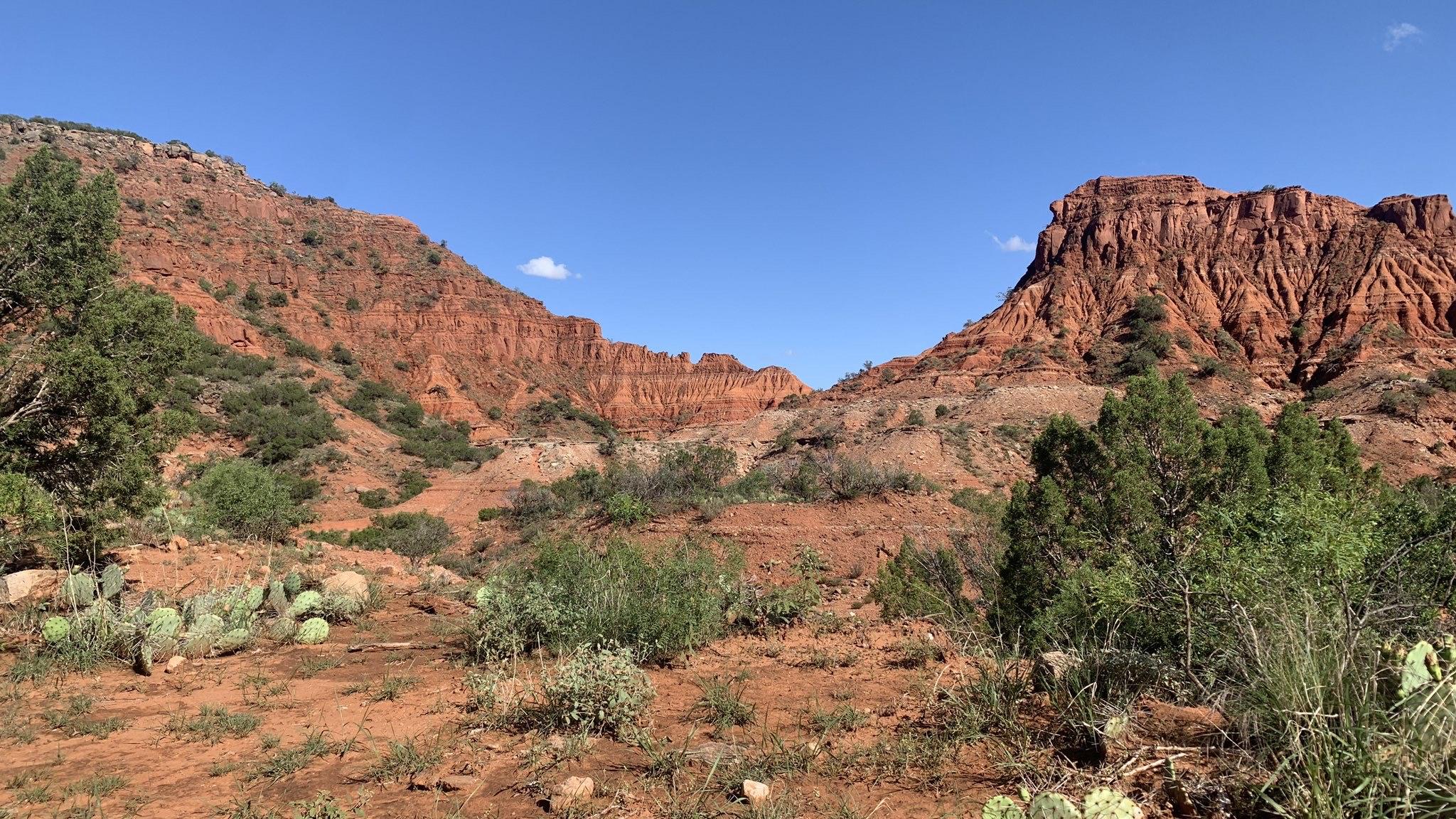
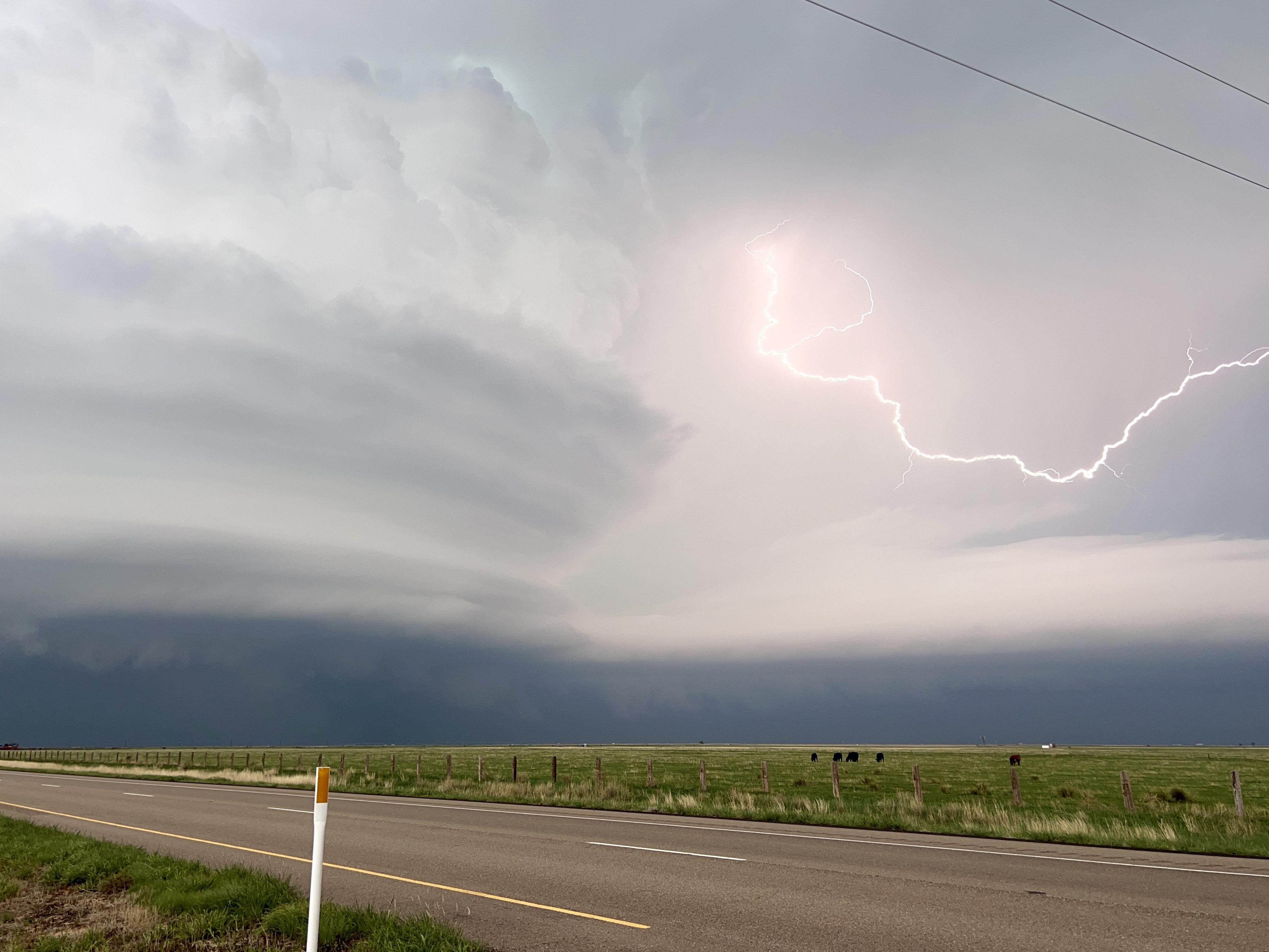
While chasing storms is an intense experience, Steiger and program organizers ensure that staying safe is an important part of the opportunity.
Returning home
When the class returned, they spent a couple of days compiling their research and giving individual presentations on their findings.
“We looked at the data we collected out in the field. We launched weather balloons every single day that we chased, which collect vertical profiles of the atmosphere,” said Pagnanelli. “So you can do research based on that data, along with what we observed in the storms, and look at the radar to draw some conclusions.”
At the end of the trip, the students received a certificate of completion for participating in the program, which they can use while applying for future positions in meteorology.
“I definitely thought it was a worthwhile experience being able to storm chase with several of the professors and instructors that came, who are much more experienced,” said Pagnanelli. “I learned a lot from them, and now, I think everyone who went on the trip would be able to storm chase themselves in the future safely. I would definitely recommend that students go on the trip, especially if they’ve never storm chased before.”
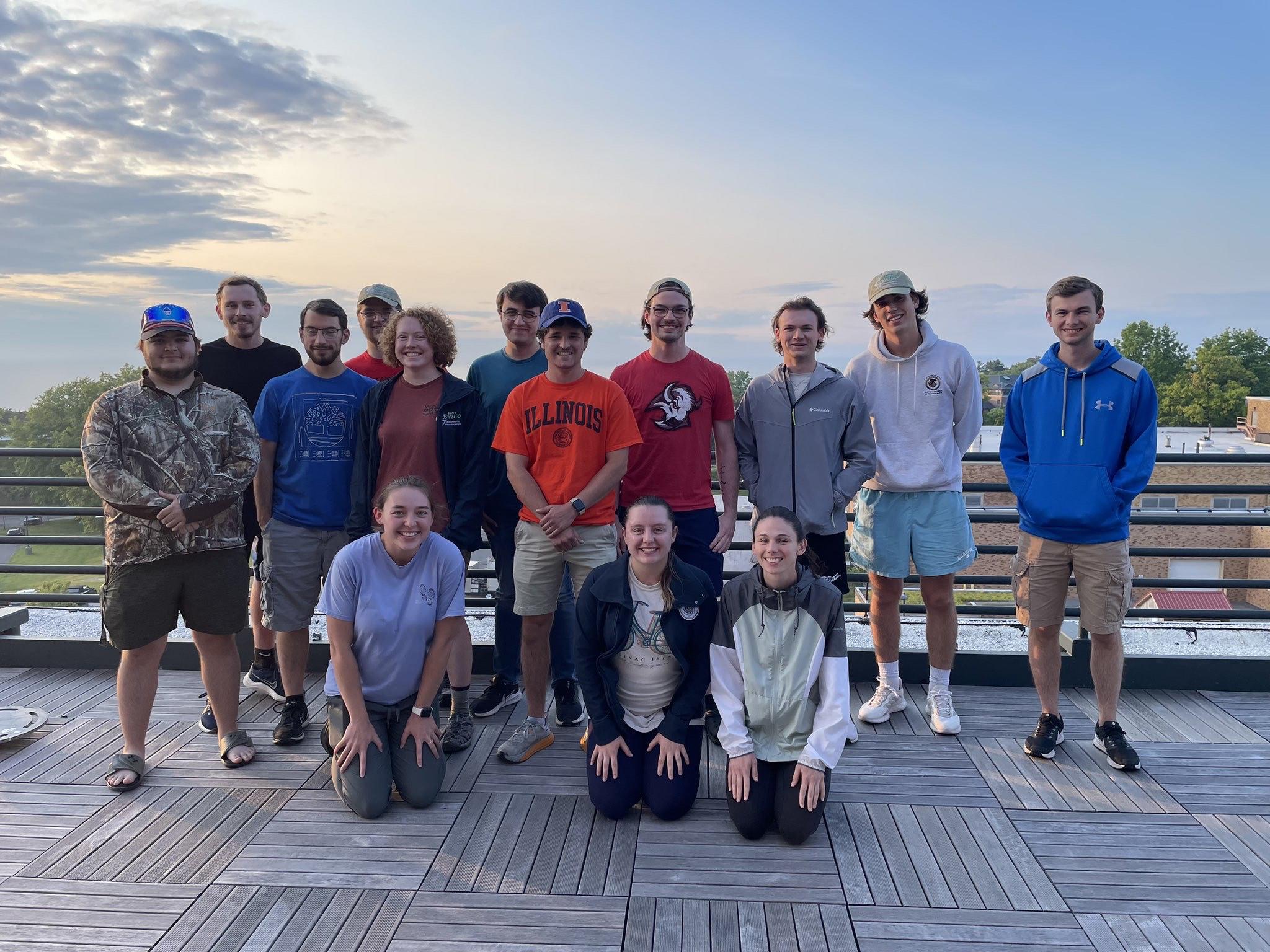
-- Images provided by Professor Scott Steiger and the Oswego Chasers (2023).




